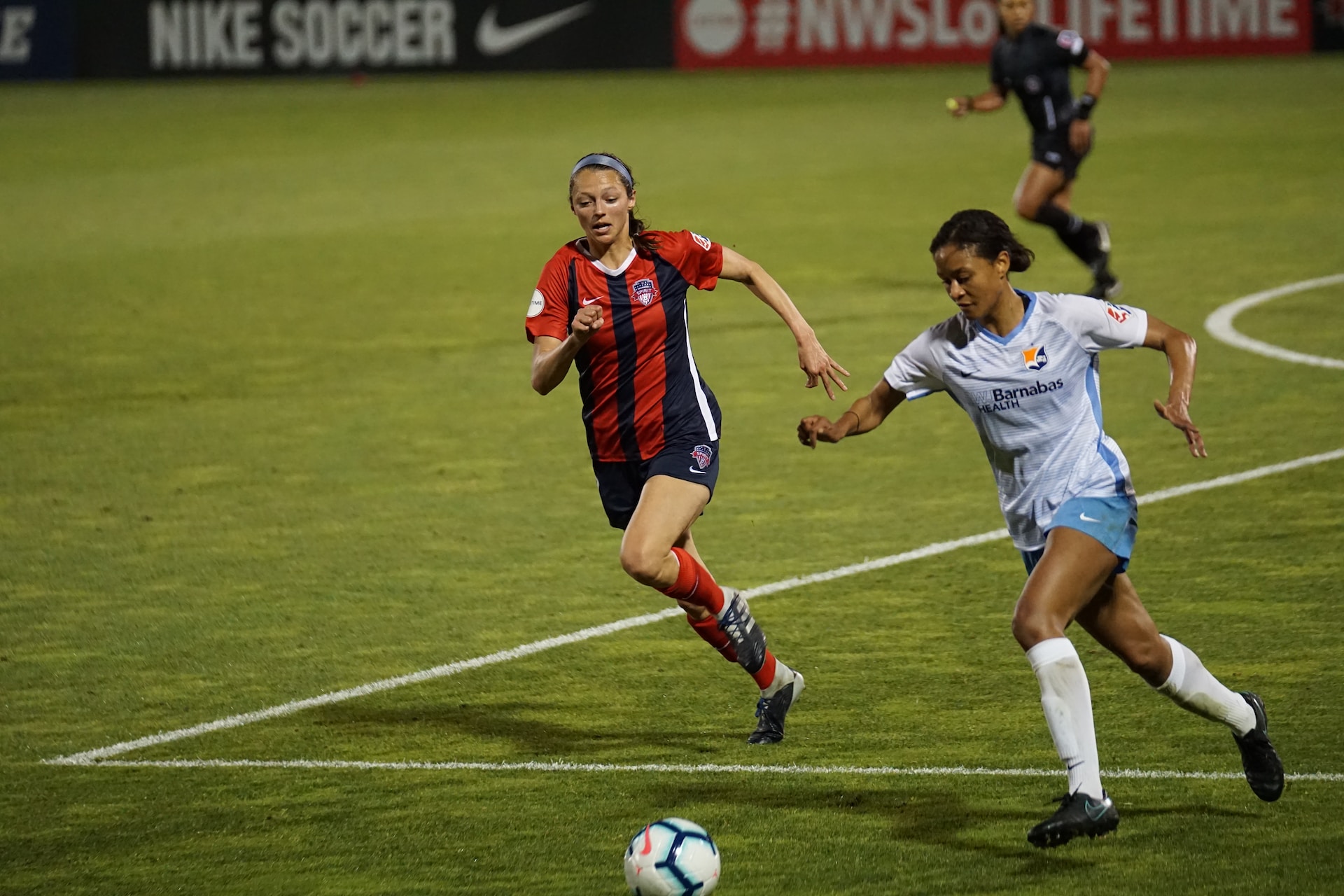Almost none of the world's largest sports teams are active in early-stage investing - we got the answers to why from the worlds of football, basketball and venture capital.

Most of the biggest carmakers on earth have a corporate venture capital arm. So do the biggest insurers and pharmaceutical companies. But look at the most valuable teams in sports and what’s striking is that almost none have dipped a toe into investing in startups. Why is that?
We spoke to several investors in the sports world and the answers include competition issues for startups and a short-term mindset that may work on the field or the court but which doesn’t translate to VC. Wim Ponnet, who headed strategy at media company Endemol before launching sports, media and tech fund Ponninvest, believes one of the main reasons is a lack of startup knowledge in the sector.
“How do I say this politely – where is the expertise in corporate venturing within a sports team?” he says.
Ponnet recommends sports teams learn to invest gradually, partnering with incubators and taking LP stakes in those incubators, potentially with board seats, to help them understand these markets. But this is a gradual, long-term approach that sits uncomfortably within a fast-moving sports organisation.
Imagine, he says, a high-level football team making near $450m in revenue and a $40m loss each year, much of which is down to player trading. How are you going to measure the performance or effectiveness of a five-person CVC unit within that business model?
“Because you know how these things work,” Ponnet says. “Nine out of ten – let’s be nice, eight out of ten of these things are going to fail. You need to be in this for the long run. And to me, that’s the answer to why nobody is really doing this.
“You need to take a ten-year horizon on this, and I think that’s very, very difficult.”
“I think they are completely orphaned within a bigger scheme of things where people are going to look at it and ask what they are actually adding. ‘How is this changing things? What are we getting out of this?’ Because you need to take a ten-year horizon on this, and I think that’s very, very difficult.”
Albert Mundet heads up Barça Innovation Hub, the innovation and investment arm of FC Barcelona, one of the biggest football teams in the world, and he sees a similar problem. There is a coach’s mantra where you only focus on your next game, but VC takes the opposite stance, waiting patiently for big returns years down the road. What’s more, good performance on the field can distract from bad management behind the scenes and vice versa.
“That means it is much tougher to have long-term vision,” he says. “There is a lot of volatility around sporting results, you cannot control them and that means the whole management in sports is really focused very much match to match. We play matches every three days when we are playing in the Champions League and the Spanish league, and you can see sometimes that the whole organisation is focused on a three-day match.
“There is probably a lot of focus on the transfer market – hiring new players and selling players – that makes it difficult for an organisation in the sports world to think outside the box and think how they can start diversifying themselves and creating their corporate venturing units.”
Startup investments make more sense off the field than on
In theory, there should be a variety of technologies that can benefit on-field performance, not just in sports and fitness tech, but in data and health. One of Barca Innovation Hub’s target areas for instance is the intersection of sport and health. But many teams that do invest tend to be more focused on the financial than strategic returns, especially in the North American market, meaning they can invest in a very broad range of areas.

David Garcia, who runs Hawks Ventures for NBA basketball franchise the Atlanta Hawks, says his investment brief includes startups that can benefit the Hawks’ core business. But that business isn’t necessarily what you think it is.
“It’s not just what happens on the court,” Garcia says. “We’re a hospitality company, a security company, a food and beverage company, we have a real estate development outside the arena – all of these things are part of our core business. Sometimes people forget we’re not just about what happens on the court, there are a lot of different things we do as an organisation.”
Hawks Ventures operates a returns-focused model where investment capital is divided between the team and its ownership group. That’s not atypical in a North American market where it’s far more common for VC funds to be spun out of sports teams and overseen by the owners – the LA Dodgers’ Elysian Park Ventures for example, or Harris Blitzer Sports & Entertainment, which owns teams across several sports as well as a VC arm that backs sport and sport-adjacent startups.
“I think because it is ownership-driven and it’s individuals rather than publicly-traded organisations, there is a lot more flexibility to operate like a traditional VC.” Garcia says. “Your owners are your LPs, you can set the mandate and the performance targets independently of having to worry about how it impacts the core business.”
Sports teams can sometimes be more collaborative investors
A unique feature of North American sports leagues is that they typically operate with no relegation, a draft system that compensates for poorer performance and some level of revenue sharing. In many cases, commercial partnerships are handled on a federation level, so there isn’t the same competitive edge you’d have between, say, Google and Microsoft. Teams are in competition for prizes, not for customers.
“The Dallas Cowboys can share ideas with (fellow American football team) the Atlanta Falcons on the business side because you’re not really competing with each other,” Garcia says. “Our fans are not going to a game in Dallas, we’re competing within our own market, and so it’s a very different type of business.“
“That collaborative nature that exists on the core business side is what generates the ability to be collaborative on the investment side“
“That collaborative nature that exists on the core business side is what generates the ability to be collaborative on the investment side. That doesn’t exist in other markets but it’s a core part of what we have here.”
But not always
On the other hand, competition can mean teams are unwilling to only take a minority share in a startup with technology that could make a real difference in performance.
“If you have a cutting edge, let’s say scouting technology – do you want everybody in the league to have it if you are the venture investor?” asks Ponnet. Teams, he says, would want to get access for something that noone else can get, even for a limited time. “And you’re not going to get that if you make a 20% investment,” he says.
Ponnet makes the point that startups want to “fish in every river” and they will not want to be be prevented from working with other teams. “It doesn’t really work that way, does it?” he says.
Garcia, whose fund is very much based on generating returns and using the Hawks’ resources to help startups grow, agrees. A great product might bring a competitive advantage, but that only works if no one else uses it, and the point of making a VC investment is that you want as many people to use it as possible.
“Less than 1% of all basketball players are NBA players,” he says. “So, it makes for small markets where it is hard to generate traditional venture returns which are 10x plus.”

What are the growth areas for sports tech investment?
So, what are the advantages of doing CVC if you’re a big sports team? And where is the investment going?
Ponnet says some 60% of funding last year was channelled into fan engagement technology, which has largely moved on from the NFT craze and is largely focused on areas like ticketing, push technologies and fantasy sports.
Nor is that limited to what people think of as the ‘big’ leagues. He cites women’s sports as a great area of potential because ideas are less entrenched, and he expects some of the biggest innovations in engagement and rights management to come in smaller sports that need to innovate to thrive or even survive.
Barca Innovation Hub meanwhile looks to the points where sport meets areas like health, entertainment, infrastructure and even climate technology. Mundet says data technology in particular has taken a big jump forward in recent years and cites portfolio company Oliver, creator of a wearable GPS tracker that can produce data on footballing metrics, as an example of what can be adopted at all levels of sport.
“I don’t like to say that we are investing in sports tech,” he says. “We are basically using sports and its capacity, and our branding and knowledge assets to unlock value in the intersection between these other sectors and sports, and bring sports tech more to the general masses – for sports practitioners rather than just high-performance athletes.”
And then of course, there is artificial intelligence. Garcia points to how AI and data technology can enhance broadcasting and general work behind the scenes. Hawks Ventures recently met a startup with an AI tool that can automatically write emails in a particular person’s voice and cadence while linking more than 2,500 accounts.
“It really amplifies the potential of one individual, what they can do and how many people they can reach,” he says. “You’re going to see a lot more of that, and not just in sport, in lots of industries. How do you leverage AI to get more efficient and allow you to focus on other things and help grow your business? It’s moving in the direction of younger generations – more data, more insight.”








